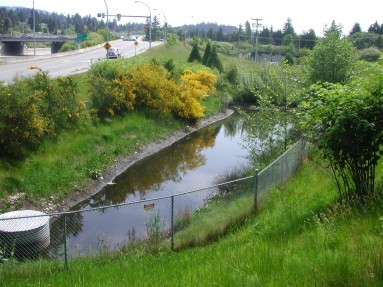

In natural areas, rain can soak into the ground. But in urban areas,pavement and roads keep this from happening. Instead, water is collectedby storm sewers and directed to creeks and streams. It may carry lots ofsediment with it that can harm water quality. To solve this problem,whenever new construction takes place, contractors often must includeplans for a wet pond, also called a sediment pond. This is especiallyimportant the construction will impervious material, such as asphalt orconcrete, replacing natural vegetation. So youll often see a wet pondnext to a large parking lot or a new housing development. In a parkinglot, rain will wash oil from cars down to the wet pond.
Wet pond hold runoff water from storms, but they always have some water.Sediment and other pollutants settle out of the water so that when wateris discharged from the pond, it does not carry these materials into astream. Wet ponds usually contain vegetation so that the plants roots mayhold the sediment and use the nutrients that are often contained in urbanrunoff. The ponds can also mitigate flooding in the event of a majorstorm and thus control impact downstream. Many of the lakes indevelopments are actually detention or retention wet ponds whichdevelopers have designed to look like natural bodies of water. If theyare properly constructed and maintained, such ponds can be extremelyeffective in removing sediment and in reducing nutrients.